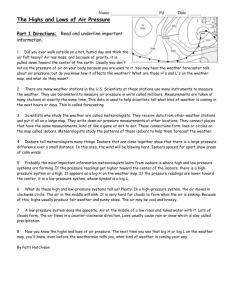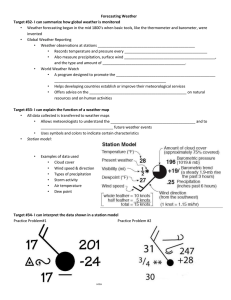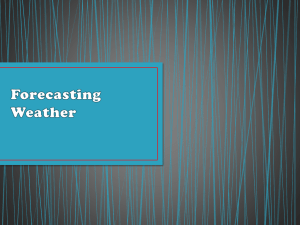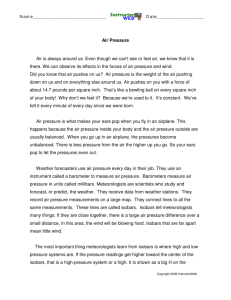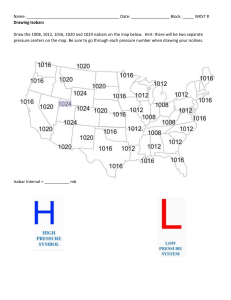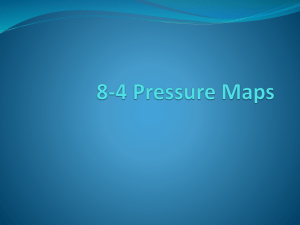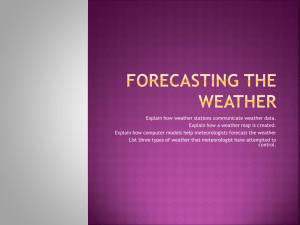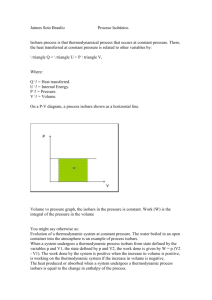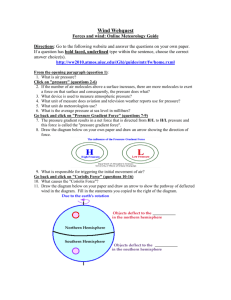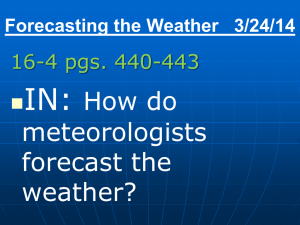The Highs and Lows of Air Pressure word
advertisement
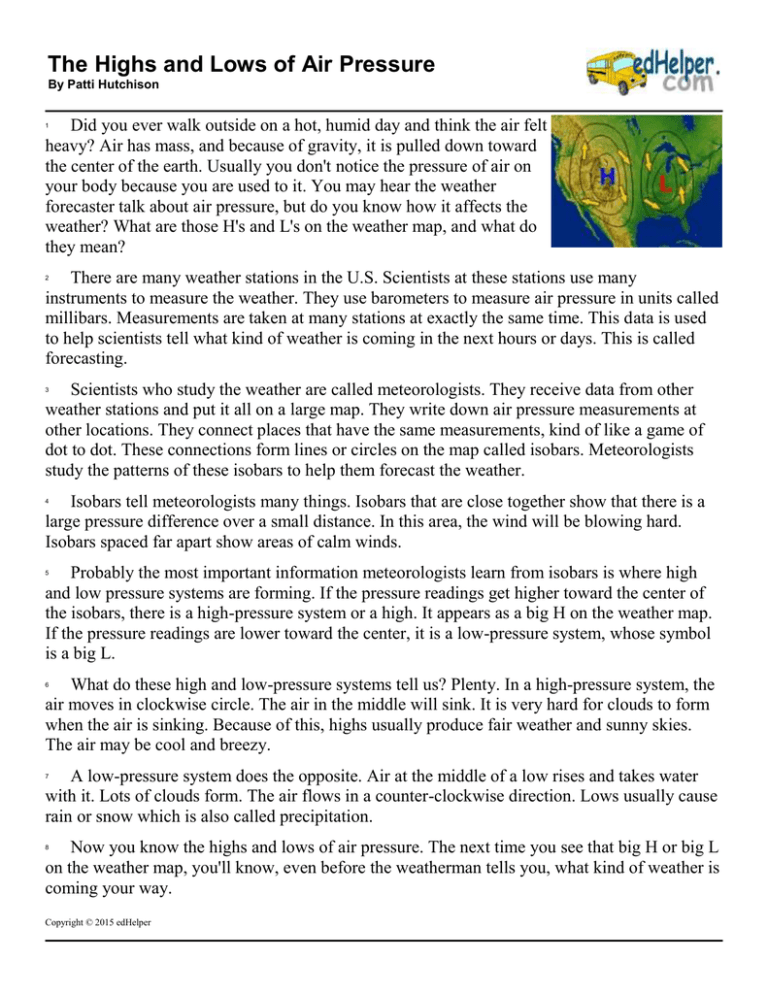
The Highs and Lows of Air Pressure By Patti Hutchison Did you ever walk outside on a hot, humid day and think the air felt heavy? Air has mass, and because of gravity, it is pulled down toward the center of the earth. Usually you don't notice the pressure of air on your body because you are used to it. You may hear the weather forecaster talk about air pressure, but do you know how it affects the weather? What are those H's and L's on the weather map, and what do they mean? 1 There are many weather stations in the U.S. Scientists at these stations use many instruments to measure the weather. They use barometers to measure air pressure in units called millibars. Measurements are taken at many stations at exactly the same time. This data is used to help scientists tell what kind of weather is coming in the next hours or days. This is called forecasting. 2 Scientists who study the weather are called meteorologists. They receive data from other weather stations and put it all on a large map. They write down air pressure measurements at other locations. They connect places that have the same measurements, kind of like a game of dot to dot. These connections form lines or circles on the map called isobars. Meteorologists study the patterns of these isobars to help them forecast the weather. 3 Isobars tell meteorologists many things. Isobars that are close together show that there is a large pressure difference over a small distance. In this area, the wind will be blowing hard. Isobars spaced far apart show areas of calm winds. 4 Probably the most important information meteorologists learn from isobars is where high and low pressure systems are forming. If the pressure readings get higher toward the center of the isobars, there is a high-pressure system or a high. It appears as a big H on the weather map. If the pressure readings are lower toward the center, it is a low-pressure system, whose symbol is a big L. 5 What do these high and low-pressure systems tell us? Plenty. In a high-pressure system, the air moves in clockwise circle. The air in the middle will sink. It is very hard for clouds to form when the air is sinking. Because of this, highs usually produce fair weather and sunny skies. The air may be cool and breezy. 6 A low-pressure system does the opposite. Air at the middle of a low rises and takes water with it. Lots of clouds form. The air flows in a counter-clockwise direction. Lows usually cause rain or snow which is also called precipitation. 7 Now you know the highs and lows of air pressure. The next time you see that big H or big L on the weather map, you'll know, even before the weatherman tells you, what kind of weather is coming your way. 8 Copyright © 2015 edHelper 1. A scientist who studies the weather is called a ______. Astrologist Meteorologist Weatherologist Scientologist 3. How are isobars formed? 2. Air pressure is measured in Inches Degrees Feet Millibars 4. In a high-pressure system, the rotation of the air is in the ______ direction. Counterclockwise Clockwise 5. A low-pressure system usually causes what 6. What do isobars that are spaced close kind of weather? 7. If a high-pressure system is in place, there will be cloudy skies. False True together tell us? 8. Why does a high-pressure system make it hard for clouds to form? Which would you rather see on a weather map in your area, a high or a low? Tell why.
